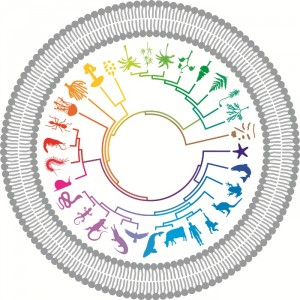
Blind mole rats (Spalax spp) are extraordinary rodents that spend most of their lives underground, digging in poorly ventilated tunnels. Their ability to conduct intensive aerobic work under low oxygen pressures is remarkable, as is their lifespan of 20 years or more, which despite its length is not associated with spontaneously arising tumors. A paper published in BMC Biology now shows that their resistance to cancer extends to chemically-induced tumors, and that normal fibroblasts from these animals have the ability to suppress cancer cell viability and growth.
The BMC Biology paper by Manov et al reports that while laboratory mice and rats develop multiple skin cancers in response to applied carcinogens, the skin lesions produced by this treatment in blind mole rats heal without tumors being formed. In a second set of experiments subcutaneous injection with a carcinogen induced malignant fibrosarcomas in all mice and rats tested, but just one malignancy in a single old blind mole rat (of 12 animals tested). Exactly how the blind mole rats avoid forming these chemically-induced cancers requires further investigation but both carcinogenic protocols induce oxidative stress and the authors reasonably speculate that one or more of their many genetic adaptations to hypoxia may be involved.
Readers of the current wikipedia entry for Spalax might have the impression that the mechanism by which blind mole rats resist cancer has already been solved, and that it is due to “concerted” necrotic cell death triggered by interferon-beta in response to excessive cell proliferation. This account stems from a study published last year in PNAS on blind mole rat fibroblasts grown in culture, however, and it is not yet clear that such a mechanism operates in vivo. Moreover the new study from Manov and colleagues also examines the growth of Spalax fibroblasts in culture and fails to replicate the observation of concerted necrotic cell death. In the PNAS study, culture supernatant from the dying Spalax fibroblasts (which from indirect assays on human cell lines was concluded to contain interferon-beta) triggered cell death in cultures of normal mouse fibroblasts but did not affect normal human fibroblasts. By contrast, Manov et al report that co-culture with Spalax fibroblasts, or medium conditioned by their growth does not adversely affect normal fibroblasts from a variety of rodents or humans, but does inhibit the growth and viability of human cancer cell lines and the Spalax fibrosarcoma cells. These latter experiments suggest that factors which act selectively against cancer cells are being produced by the Spalax fibroblasts and could be identified by further experimental work.
Might such a factor have been already found? Blind mole rats do not have a monopoly on cancer resistance and experiments on an even longer lived subterranean rodent, the naked mole rat (Heterocephalus glaber), recently hit the headlines when a paper in Nature identified high molecular weight hyaluronic acid (HMW-HA) as having a key role in their resistance to cancer. This study found that HMW-HA is present at high levels in these animals and that it is responsible for the early contact inhibition their fibroblasts display when cultured, and for their resistance to oncogene-induced transformation into cells able to grow as transplanted tumors in immunodeficient mice. The paper includes supplementary data showing that HMW-HA is also made by blind mole rat fibroblasts, but the latter do not show early contact inhibition when grown in culture and it is not obvious whether and how HMW-HA might contribute to their ability to avoid cancer. Blind and naked mole rats are not closely related evolutionarily, and have distinctive genetic adaptations and metabolic features. Both these subterranean rodents may have more to teach us about how to resist cancer, and the story of how blind mole rats do it is not yet completely told.
2 Comments